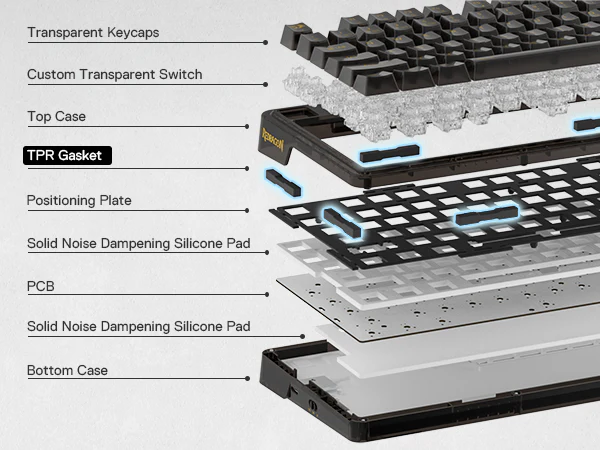Mechanical keyboard enthusiasts are always on the lookout for ways to enhance their typing experience, and one of the most popular trends today is the gasket mount keyboard. If you’re passionate about custom keyboards, this Gasket Mount Keyboard Build Guide for Enthusiasts will walk you through the essentials of creating your very own gasket mount keyboard with a perfect balance of sound, feel, and aesthetics.
What is a Gasket Mount Keyboard?
Before diving into the build process, it’s important to understand what sets a gasket mount keyboard apart. Unlike traditional keyboard mounts, gasket mount designs use a layer of flexible material—usually silicone or rubber gaskets—between the keyboard plate and the case. This setup provides increased sound dampening and a softer typing feel, which many enthusiasts prefer.
Why Choose a Gasket Mount Keyboard?
Choosing a gasket mount design means prioritizing acoustics and typing comfort. The gaskets act as shock absorbers, reducing the vibration and noise produced when typing. This results in a more muted, thocky sound that is highly sought after in the keyboard community. For those looking to upgrade their typing experience, following a Gasket Mount Keyboard Build Guide for Enthusiasts ensures that you achieve the best results.
Step-by-Step Gasket Mount Keyboard Build Guide for Enthusiasts
1. Gather Your Components
- Keyboard case compatible with gasket mounting
- Plate (usually aluminum or brass)
- Gasket material (silicone or neoprene strips)
- PCB (printed circuit board)
- Switches
- Keycaps
- Stabilizers
- Screws and tools
2. Prepare the Gasket
Cut the gasket material into strips or shapes that will fit perfectly between the plate and the case. The gasket placement is crucial—it should evenly cushion the plate without creating pressure points.
3. Assemble the Keyboard
- Install the stabilizers on the PCB.
- Mount switches onto the PCB.
- Carefully place the gasket strips inside the case.
- Position the plate on top of the gaskets.
- Screw the plate and case together, ensuring even compression of the gaskets.
4. Testing and Adjustments
After assembly, test the keyboard for typing feel and sound. If the sound is too hollow or too firm, adjust gasket thickness or placement as needed.
Final Thoughts
Building a gasket mount keyboard is a rewarding project that combines technical skills and personal customization. By following this Gasket Mount Keyboard Build Guide for Enthusiasts, you’ll gain a deeper appreciation for the mechanics behind keyboard acoustics and ergonomics, while creating a unique typing tool that perfectly suits your style.
